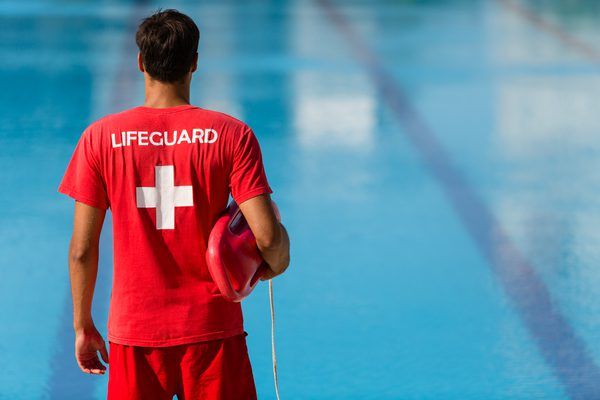When it comes to ensuring the safety of swimmers at beaches and pools, effective communication among lifeguards is essential. In high-pressure environments where every second counts, teamwork and clear signaling can mean the difference between life and death lifeguard. This blog post explores the importance of communication and teamwork in lifeguarding, along with best practices to enhance these critical skills.

The Importance of Teamwork in Lifeguarding
- Shared Responsibility: Lifeguards are responsible for monitoring large areas and ensuring the safety of numerous swimmers. When lifeguards work as a cohesive team, they can cover more ground and share the responsibility of surveillance, reducing the risk of accidents or drownings.
- Faster Response Times: In emergencies, every second counts. A well-coordinated team can respond more quickly to incidents, as lifeguards can immediately communicate the situation to one another. This rapid response is crucial in situations where multiple lifeguards need to jump into action simultaneously, such as during a rescue or medical emergency.
- Mutual Support: Lifeguarding can be physically and mentally demanding. A strong team dynamic fosters mutual support, allowing lifeguards to communicate their needs, share tips, and provide emotional encouragement during high-stress situations. This camaraderie enhances their effectiveness on the job.
Effective Communication Techniques
- Pre-Shift Briefings: Before each shift, lifeguards should hold a quick briefing to discuss roles, responsibilities, and any specific concerns related to that day. This practice ensures everyone is on the same page and familiar with the potential challenges they may face.
- Clear Signals and Hand Gestures: Lifeguards should develop a set of standardized hand signals or gestures for various situations, such as signaling for backup, indicating a swimmer in distress, or calling for emergency services. These visual cues can be invaluable in noisy environments where verbal communication is difficult.
- Two-Way Radios: In larger facilities or beach settings, using two-way radios can enhance communication. Lifeguards can quickly relay information, request assistance, or report incidents without leaving their posts. Ensuring that all lifeguards are trained in using these devices is crucial for seamless communication.
- Regular Drills and Training: Conducting regular emergency drills that require lifeguards to communicate effectively can build their confidence and coordination. These simulations help lifeguards practice their signals and teamwork in a controlled environment, ensuring they are prepared for real-life emergencies.
The Role of Leadership
Strong leadership is vital in fostering a culture of effective communication and teamwork. Senior lifeguards or supervisors should lead by example, demonstrating clear communication practices and encouraging open dialogue among team members. Recognizing and rewarding teamwork can also motivate lifeguards to prioritize collaboration.
Conclusion
In the world of lifeguarding, effective communication and teamwork are not just beneficial; they are essential. By prioritizing clear signaling, mutual support, and regular training, lifeguard teams can enhance their ability to respond to emergencies and keep swimmers safe. Ultimately, a well-coordinated lifeguard team creates a safer environment for everyone, ensuring that summer days spent at the beach or pool remain enjoyable and safe.